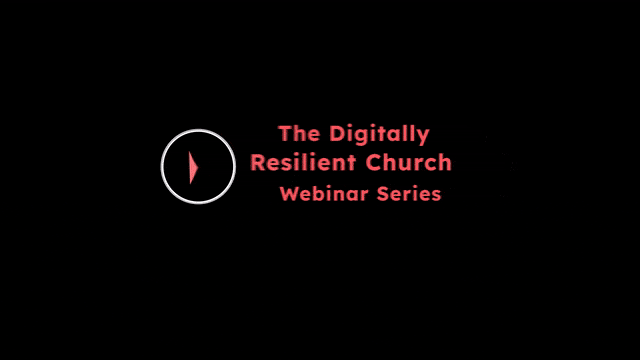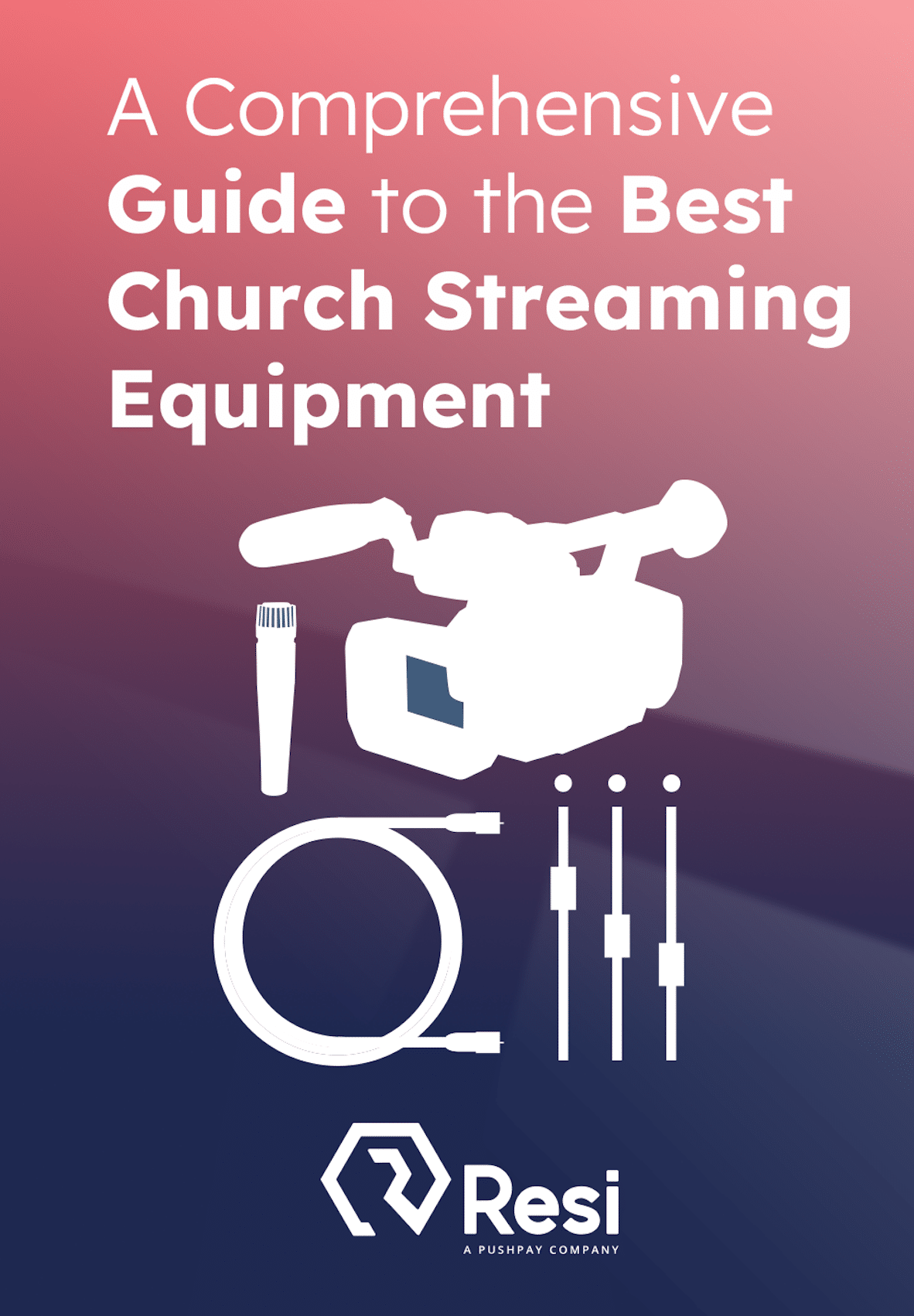
Sunday morning. Service goes live. Everything looks good. Then, halfway through the sermon—buffering. The stream freezes. Your tech volunteer’s face goes pale. Online viewers start dropping off. By the time you troubleshoot and restart, you’ve lost half your digital congregation.
Sound familiar?
Here’s the thing: cheap streaming software isn’t inherently bad. For many churches, it’s exactly where the journey starts — limited budgets, learning curves, leadership that needs to see results before committing resources. Starting with an entry-level platform makes sense—until it doesn’t.
The question isn’t whether budget solutions have value. The question is: when does the cost of “affordable” become too expensive?
When Budget Solutions Make Sense
Let’s be honest—not every church can write a check for professional-grade streaming equipment on day one. Budget constraints are real. Volunteer teams are still figuring out the basics. Leadership wants proof that online ministry actually matters before investing thousands of dollars.
Entry-level streaming platforms serve a purpose; they lower the barrier to entry and help teams learn fundamental concepts like encoding, bitrate, and platform distribution without overwhelming complexity. For churches just testing the waters of digital ministry, starting small is strategic.
The learning curve matters too. When your team consists of volunteers who show up an hour before service, you need something they can operate without a degree in broadcast engineering. Simple interfaces and straightforward setups have their place.
But simplicity shouldn’t come at the cost of reliability. And that’s where most churches discover the line between “affordable” and “adequate” gets pretty thin. Understanding what your ministry ultimately needs from a church live streaming platform helps you recognize when you’ve outgrown your starting point.
The Hidden Costs of Cheap Streaming Software
The monthly subscription fee isn’t the real price tag. Cheap streaming software creates costs that don’t show up on invoices but devastate your ministry’s effectiveness.
Time Is Money (And Sanity)
Every Sunday becomes a gamble. Will the stream work? Will the audio sync? Will the connection hold? Your tech team arrives earlier each week, not because they want to, but because they have to build in troubleshooting time.
That’s hours of volunteer time spent fighting with software instead of preparing for worship. Hours your tech director spends researching workarounds instead of equipping the team. Hours your staff wastes in meetings trying to explain why the stream failed—again.
Calculate it. If your volunteer team spends an extra three hours per week managing an unreliable system, that’s 156 hours per year. If your tech director makes $50,000 annually and spends even 10% of their time on streaming issues, that’s $5,000 in hidden labor costs.
Viewer Trust Erodes Fast
Here’s what most churches don’t realize until it’s too late: online viewers are less forgiving than in-person attendees. Someone sitting in a pew will tolerate a microphone glitch. Someone watching from their couch will close the browser tab.
Research shows that 27% of viewers abandon a stream after the first buffering wheel. After the second buffer? That number jumps to 40%. Your message might be life-changing, but they’ll never hear it if your stream can’t stay live.
Every failed stream doesn’t just lose viewers—it trains them not to trust you. They stop checking your website. They stop inviting friends. They start looking for churches with reliable online experiences. Your cheap streaming software just cost you the very audience you were trying to reach.
The Resilient Streaming Protocol was designed specifically to solve this problem—protecting video quality even when network conditions aren’t perfect. But entry-level platforms don’t have that kind of technology built in.
Five Signs Your Church Has Outgrown Entry-Level Streaming
You don’t wake up one day and suddenly need better streaming. The realization creeps in through repeated frustrations. If any of these scenarios sound painfully familiar, you’ve already outgrown your current setup.
1. You’re Streaming to Multiple Platforms—Manually
Your church wants to reach people on Facebook, YouTube, and your website simultaneously. That makes sense. But your current software requires you to configure each destination separately. Every. Single. Week.
Your tech team spends Sunday mornings copying and pasting stream keys, double-checking URLs, and hoping all three platforms actually go live at the same time. When one fails, they have to troubleshoot while the service is already underway.
This isn’t streaming—it’s juggling. Professional platforms automate multi-platform distribution through RTMP destinations, letting you configure once and stream everywhere without weekly setup rituals.
2. Internet Hiccups Become Full-Blown Disasters
Your church’s internet connection isn’t perfect. Nobody’s is. Maybe someone’s uploading files on the guest network. Maybe the weather affects your service. Maybe your ISP is just having a bad day.
With cheap streaming software, any disruption means disaster. The connection drops for fifteen seconds, and your stream is dead. Viewers see frozen frames or “stream offline” messages. By the time you reconnect, engagement has plummeted.
Professional streaming platforms build in redundancy. They buffer content. They handle temporary disconnections without your viewers noticing. They protect the message even when the infrastructure isn’t perfect.
3. Your Volunteers Are Quitting
High volunteer turnover is normal in churches. But when people leave your tech team specifically because the streaming system is too stressful, that’s a red flag you can’t ignore.
Entry-level platforms often lack intuitive interfaces. New volunteers take weeks to train. Experienced operators burn out from constant troubleshooting. Sunday mornings feel like crisis management instead of worship facilitation.
You’re not just losing volunteers—you’re losing institutional knowledge every time someone quits. The cycle of training and re-training never ends. Meanwhile, the confidence level in your streaming setup stays perpetually low.
4. You’re Adding Campuses or Remote Locations
Your church is growing. Leadership wants to launch a second campus. Or maybe you want to broadcast services to a nursing home. Or perhaps you’re experimenting with overflow rooms.
Entry-level streaming software wasn’t designed for multisite scenarios. It can’t reliably deliver content to multiple physical venues simultaneously. It doesn’t handle the complexity of synchronized broadcasts. It doesn’t provide the quality control necessary when you’re serving multiple locations.
Trying to force a basic platform into a multisite distribution is like using a bicycle for cross-country moving. Technically possible? Maybe. Practical? Absolutely not.
5. Leadership Questions the Investment Every Quarter
This one cuts deep. You’re working hard. Your team is doing their best. But every quarterly review includes the same conversation: “Why is streaming still causing problems?”
Leadership sees the budget line item. They hear about viewer complaints. They watch online attendance stagnate despite platform promises. The platform you chose to “save money” now costs you credibility in leadership meetings.
The conversation shifts from “How do we reach more people online?” to “Is streaming even worth it?” That’s not a technical problem—that’s a strategic crisis created by inadequate tools.
What Professional-Grade Streaming Actually Delivers
Upgrading from entry-level streaming isn’t about getting fancy features you don’t need. It’s about solving the problems that are costing you time, money, and ministry impact right now.
Automation that actually works
Set up your streaming schedule once. Configure your destinations once. Then let the system handle everything else. No more Sunday morning setup rituals. No more manually starting streams. No more wondering if everything’s running correctly. Professional platforms automate what cheap software makes manual.
Resilience when you need it most
Internet connections fail. It’s not a matter of if—it’s when. Professional streaming platforms protect your content even during network disruptions. They buffer intelligently. They reconnect seamlessly. They keep viewers engaged while your IT team has no idea anything went wrong.
One church running on professional infrastructure experienced a 16-minute internet outage during their service. Their congregation never noticed. The stream continued flawlessly. Their viewers never saw a buffer wheel. That’s not luck—that’s engineered reliability.
Unified management across all platforms
YouTube, Facebook, your website, mobile apps—all from one dashboard. One schedule. One quality setting. One analytics report. You stop managing multiple systems and start managing your ministry’s digital presence as a unified strategy.
Speaking of analytics, professional platforms give you real-time insights into viewer behavior. You’ll know not just how many people watched, but when they tuned in, where they’re located, and how long they stayed. That’s data you can actually use to improve engagement.
Support when you actually need it
Entry-level platforms (and even some of the big guys) offer email support during business hours. But what about weekends? What about when your team needs support on Sunday morning at 9:47 a.m.
Professional streaming providers staff their support teams when churches need them—including weekends. You’re not alone when problems happen. You have experienced professionals available to help, right when the stakes are highest.
Onboarding that respects your team’s time
New volunteer joins the team? They shouldn’t need three weeks of training before they can run a stream. Professional platforms prioritize intuitive design. They provide clear documentation. They build systems that volunteers can operate confidently after one orientation session.
Making the Business Case to Leadership
You’re convinced. Your team is convinced. Now you need leadership to approve the investment. Here’s how to frame the conversation in terms they’ll understand.
Don’t lead with features—lead with mission impact. Leadership cares about reaching people, strengthening discipleship, and stewarding resources wisely. Show them how reliable streaming serves those goals.
Frame reliability as ministry protection
Every failed stream doesn’t just frustrate viewers—it damages the church’s reputation and credibility. Online viewers are members of your congregation too. They deserve the same quality of experience as in-person attendees. Investing in professional streaming isn’t about buying better software; it’s about honoring the people you’re called to serve.
Quantify the time savings
Document how many hours per week your team currently spends troubleshooting, managing multiple platforms, and training volunteers. Multiply that by 52 weeks. Now calculate the value of recovering those hours for actual ministry work. The numbers tell a compelling story.
Connect online reach to mission outcomes
Show leadership your current online attendance trends. Are they flat despite effort? Are they declining? Growing? Professional platforms give you the analytics to prove what’s working and what isn’t. When you can demonstrate that better streaming leads to better engagement, the investment justifies itself.
Position this as infrastructure, not just a software purchase
Churches don’t hesitate to invest in sound systems or lighting because they understand that infrastructure serves ministry. Streaming is in the same category. It’s the infrastructure that enables your church’s digital campus.
Calculate total cost of ownership
Entry-level platforms might appear cheaper, but what’s the total cost? Add up volunteer hours. Staff time. Lost engagement. Viewer attrition. Stress on your tech team. When you compare the real costs over 12-24 months, professional platforms often cost less than the “affordable” alternatives.
Give leadership language they can use when they explain the decision to others: “We’re investing in reliable infrastructure that serves our online congregation with the same excellence we provide in person.”
What to Look for in Your Next Platform
You’re ready to upgrade. Now what? Not all professional streaming platforms are created equal. Here’s what actually matters when you’re evaluating options.
Does it protect stream quality during network disruptions?
This isn’t optional—it’s essential. Look for platforms with built-in redundancy, intelligent buffering, and failover systems. Ask specifically how the platform handles temporary internet outages. Get specific answers, not vague promises.
Can you automate scheduling and multi-platform distribution?
If you’re still manually starting streams every week, you haven’t actually upgraded. Professional platforms should let you schedule once and stream everywhere automatically. This includes YouTube, Facebook, your website, and any RTMP-compatible destinations.
Is support available during peak service times?
Business-hours-only support means you’re on your own when you actually need help. Look for providers that staff support teams on weekends and early mornings. Ask about average response times during Sunday services specifically.
Does onboarding accommodate volunteers with varying skill levels?
Your tech team includes everyone from broadcast engineers to high school students. The platform needs to work for all of them. Look for intuitive interfaces, clear documentation, and training resources designed for volunteers, not professionals.
Can it scale to multisite scenarios?
Even if you’re not running multiple campuses now, you might in the future. Choose a platform that can grow with you. Can it handle synchronized broadcasts to multiple locations? Does it maintain quality when distributing to remote venues?
Red flags to watch for
Platforms that nickel-and-dime you for basic features. Support that’s only available offshore or via email. Steep learning curves that require specialized training. Inability to stream to multiple destinations simultaneously. These aren’t just inconveniences—they’re indicators you’re looking at entry-level software dressed up with professional marketing.
Consider hardware options too. Professional platforms often pair software with purpose-built encoding hardware. The Resi Mini Encoder brings broadcast-quality encoding in a compact, portable form factor—perfect for churches that need reliability without complexity.
Moving Forward With Confidence
Cheap streaming software served you well when you were starting out. It helped you prove the value of online ministry. It taught your team the basics. It got you from zero to streaming.
But your ministry has grown. Your online congregation expects more. Your team deserves better tools. Your leadership needs to see results that match the investment.
Upgrading isn’t about abandoning what got you here—it’s about recognizing when you’ve outgrown it. You wouldn’t run a growing church on the same systems you used when you had 50 members. Your streaming infrastructure should scale with your ministry too.
The churches thriving with online ministry aren’t necessarily the ones with the biggest budgets. They’re the ones that recognized when “affordable” was costing them more than professional solutions would.
Your online viewers are waiting. Your tech team is ready for relief. Your leadership wants to see streaming become a strategic asset instead of a weekly stress point.
The technology exists to make that happen. The only question is whether you’re ready to make the shift from “cheap streaming software” to streaming that actually works—every time, for everyone, without compromise.
Ready to see what professional-grade streaming looks like? Explore how Resi’s church live streaming services eliminate the frustrations you’ve been tolerating and deliver the reliability your ministry deserves.







